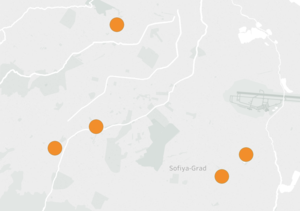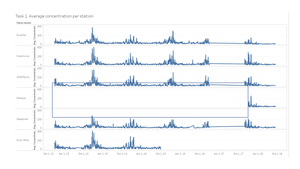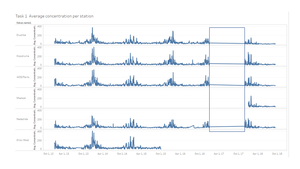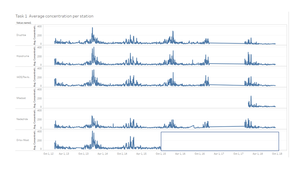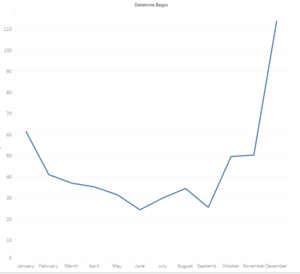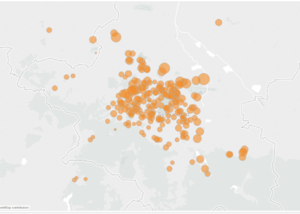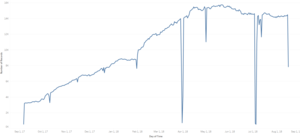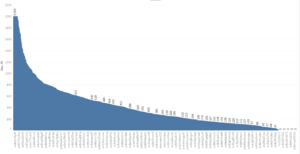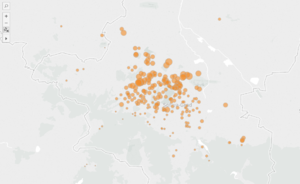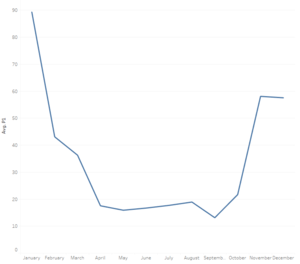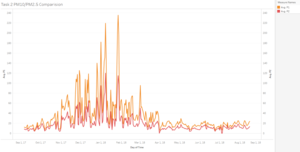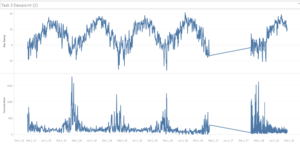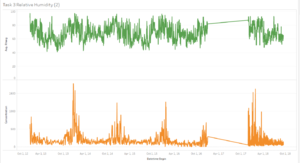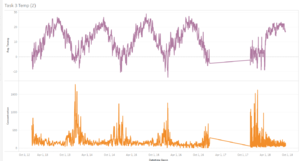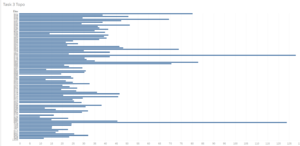Difference between revisions of "IS428 2018-19 T1 Assign CliftonNgeowShuJin"
Sjngeow.2015 (talk | contribs) |
Sjngeow.2015 (talk | contribs) |
||
| Line 1: | Line 1: | ||
=Overview= | =Overview= | ||
| + | |||
| + | The tableau public workbook can be found here: https://public.tableau.com/profile/clifton.ngeow.shu.jin#!/vizhome/IndividualAssignmentTask22017/Story1?publish=yes | ||
Air pollution is an important risk factor for health in Europe and worldwide. A recent review of the global burden of disease showed that it is one of the top ten risk factors for health globally. Worldwide an estimated 7 million people died prematurely because of pollution; in the European Union (EU) 400,000 people suffer a premature death. The Organisation for Economic Cooperation and Development (OECD) predicts that in 2050 outdoor air pollution will be the top cause of environmentally related deaths worldwide. In addition, air pollution has also been classified as the leading environmental cause of cancer. | Air pollution is an important risk factor for health in Europe and worldwide. A recent review of the global burden of disease showed that it is one of the top ten risk factors for health globally. Worldwide an estimated 7 million people died prematurely because of pollution; in the European Union (EU) 400,000 people suffer a premature death. The Organisation for Economic Cooperation and Development (OECD) predicts that in 2050 outdoor air pollution will be the top cause of environmentally related deaths worldwide. In addition, air pollution has also been classified as the leading environmental cause of cancer. | ||
| Line 8: | Line 10: | ||
According to the WHO, 60 percent of the urban population in Bulgaria is exposed to dangerous (unhealthy) levels of particulate matter (PM10). | According to the WHO, 60 percent of the urban population in Bulgaria is exposed to dangerous (unhealthy) levels of particulate matter (PM10). | ||
| − | |||
=The Task= | =The Task= | ||
Latest revision as of 23:42, 11 November 2018
Contents
Overview
The tableau public workbook can be found here: https://public.tableau.com/profile/clifton.ngeow.shu.jin#!/vizhome/IndividualAssignmentTask22017/Story1?publish=yes
Air pollution is an important risk factor for health in Europe and worldwide. A recent review of the global burden of disease showed that it is one of the top ten risk factors for health globally. Worldwide an estimated 7 million people died prematurely because of pollution; in the European Union (EU) 400,000 people suffer a premature death. The Organisation for Economic Cooperation and Development (OECD) predicts that in 2050 outdoor air pollution will be the top cause of environmentally related deaths worldwide. In addition, air pollution has also been classified as the leading environmental cause of cancer.
Air quality in Bulgaria is a big concern: measurements show that citizens all over the country breathe in air that is considered harmful to health. For example, concentrations of PM2.5 and PM10 are much higher than what the EU and the World Health Organization (WHO) have set to protect health.
Bulgaria had the highest PM2.5 concentrations of all EU-28 member states in urban areas over a three-year average. For PM10, Bulgaria is also leading on the top polluted countries with 77 μg/m3on the daily mean concentration (EU limit value is 50 μg/m3).
According to the WHO, 60 percent of the urban population in Bulgaria is exposed to dangerous (unhealthy) levels of particulate matter (PM10).
The Task
In this assignment, you are required to use visual analytics approach to reveal spatio-temporal patterns of air quality in Sofia City and to identify issues of concern.
Task 1: Spatio-temporal Analysis of Official Air Quality
Characterize the past and most recent situation with respect to air quality measures in Sofia City. What does a typical day look like for Sofia city? Do you see any trends of possible interest in this investigation? What anomalies do you find in the official air quality dataset? How do these affect your analysis of potential problems to the environment?
Your submission for this questions should contain no more than 10 images and 1000 words.
| Serial | Observation |
|---|---|
| 1 |
Using the heatmap, we can see that the typical day in Sofia is generally average with PM10 levels of 50, during the December to January period, there are greater spikes with PM10 levels reaching a maximum of over 200 PM10. |
| 2 |
As seen in the map, the average PM10 on a yearly basis is actually fair, which is above the PM10 level of 50. |
| 3 |
Mladost Station was only introduced in 2018 and does not contain any information before that. |
| 4 |
In 5 of the stations, there were missing data in the year 2017. |
| 5 |
The Orlov Most Station only had data up till 2016 where it stopped capturing air quality data. |
| 6 |
The general trend of the air quality of Sofia City. From this line graph, it can be seen that air quality gets exponentially worse during the start and the end of the year. |
Task 2: Spatio-temporal Analysis of Citizen Science Air Quality Measurements
Using appropriate data visualisation, you are required will be asked to answer the following types of questions:
- Characterize the sensors’ coverage, performance and operation. Are they well distributed over the entire city? Are they all working properly at all times? Can you detect any unexpected behaviors of the sensors through analyzing the readings they capture? Limit your response to no more than 4 images and 600 words.
- Now turn your attention to the air pollution measurements themselves. Which part of the city shows relatively higher readings than others? Are these differences time dependent? Limit your response to no more than 6 images and 800 words.
| Serial | Observation |
|---|---|
| 1 | Removing the rest of the sensors that are not relevant to Sofia City, I think that the sensor's coverage is well distributed over the entire city. |
| 2 | From the line graph, it can be seen that the sensors have failed on a couple of occasions. |
| 3 | Some of the sensors are showing a maximum of 2000 PM10 levels in a single day which is not possible, and some sensors are showing 0 PM10 levels. These are unexpected behaviours that could lead to skewed datasets. |
| Serial | Observation |
|---|---|
| 1 |
The northern part of Sofia City is most affected by the poor air quality. |
| 2 |
These parts are affected by the seasonality of the start and end of the year. |
| 3 |
The heatmap further proves the point of seasonality affecting the air quality. |
| 4 |
Sofia has a higher rate of PM10 particles than PM2.5 particles. |
Task 3
Urban air pollution is a complex issue. There are many factors affecting the air quality of a city. Some of the possible causes are:
- Local energy sources. For example, according to Unmask My City, a global initiative by doctors, nurses, public health practitioners, and allied health professionals dedicated to improving air quality and reducing emissions in our cities, Bulgaria’s main sources of PM10, and fine particle pollution PM2.5 (particles 2.5 microns or smaller) are household burning of fossil fuels or biomass, and transport.
- Local meteorology such as temperature, pressure, rainfall, humidity, wind etc
- Local topography
- Complex interactions between local topography and meteorological characteristics.
- Transboundary pollution for example the haze that intruded into Singapore from our neighbours.
In this third task, you are required to reveal the relationships between the factors mentioned above and the air quality measure detected in Task 1 and Task 2. Limit your response to no more than 5 images and 600 words.
| Serial | Observation |
|---|---|
| 1 |
The higher the average dewpoint, the less concentration of pollutants there will be in the air. |
| 2 |
Whenever it is relatively humid, there is a higher chance there the air quality will be bad. |
| 3 |
The lower the temperature, the worse the air quality will be. |
| 4 |
Elevation does not play a role in the air quality. |

